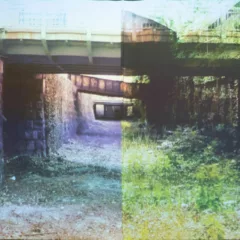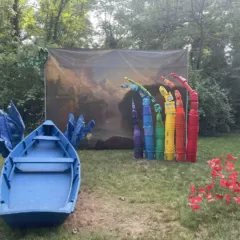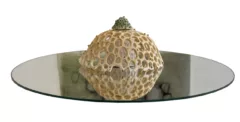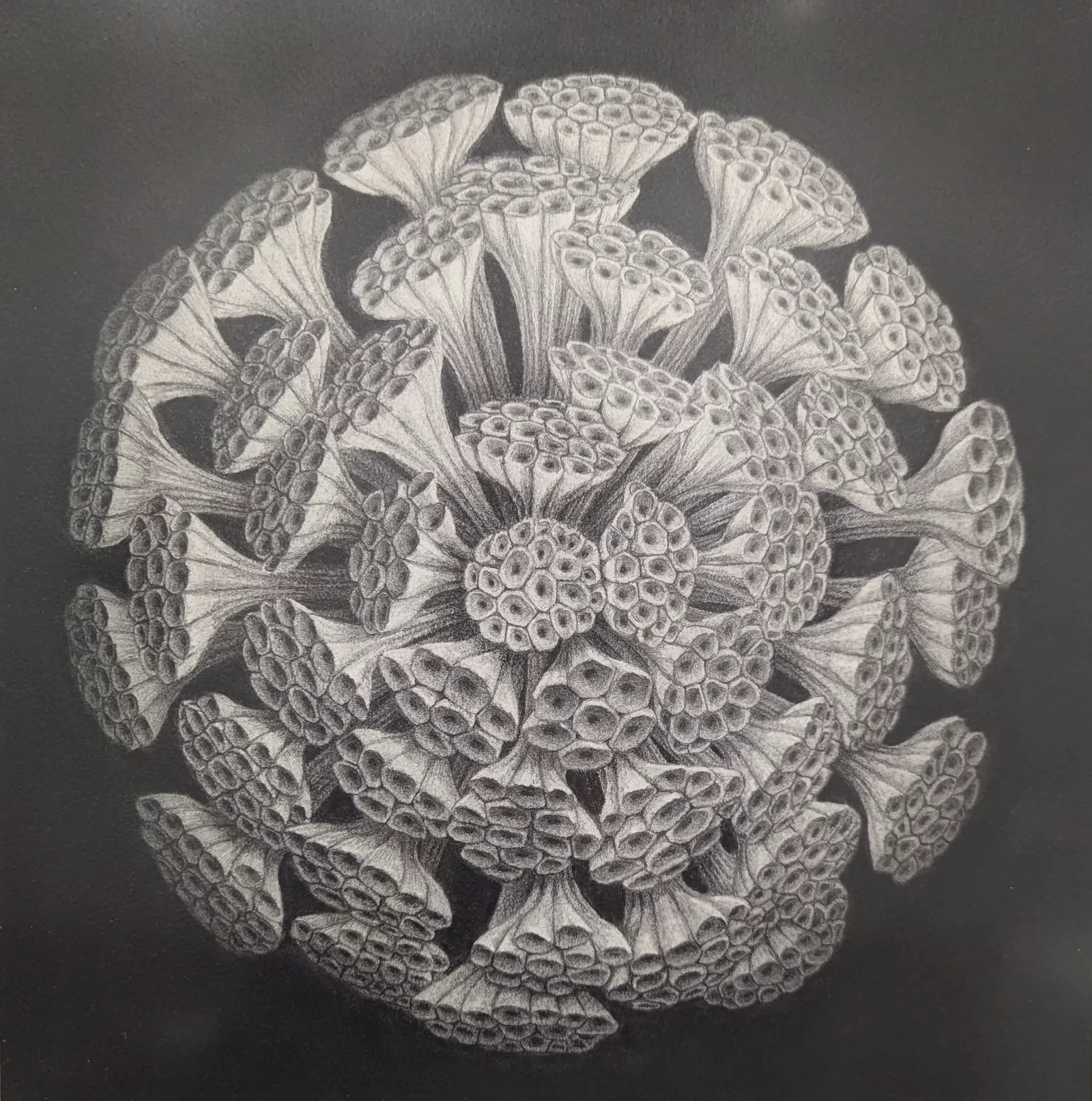
2025 is surely a turning of the tides. In just the first 3 weeks of January, we have seen the unexpected evacuation of the 76ers arena from Center City (huzzah! And good riddance!), the acceptance of a ceasefire agreement between Israel and Hamas (Inshallah, that it holds), death, and destruction of homes, art, and community from unprecedented California wildfires (we’d all like to stop using the word ‘unprecedented’, please), and we are about to see the installation of our favorite neo-fascist orange guy in to the seat of the American presidency, again. I will tell you that my brain has been on overload and it’s been difficult to sit down and concentrate on producing this piece for all of you.
The exhibit “Close Encounters” with works by Marguerita Hagan and Gregory Brellochs might actually be what I, and some of you, need right now. A slow down. A close examination. A hard look at how the human species interacts with our most precious seen and unseen natural neighbors – the small and microscopic parts of our world that allow us to survive. I visited with curator Gaby Heit and artist Marguerita Hagan at Boxspring Gallery, located on the ground floor of the Crane Arts Building. The gallery space itself might be nearly a perfect cube, and currently shows a collection of Gregory Brellochs’ detailed graphite drawings and Marguerita Hagan’s delicate ceramics. It’s striking to notice right away the prevalence of circles in both artists’ work. Heit, who is also the gallery co-owner, had taken note of this as well and produced a special show logo with a unique circular script to complement this fascinating natural circular phenomenon.
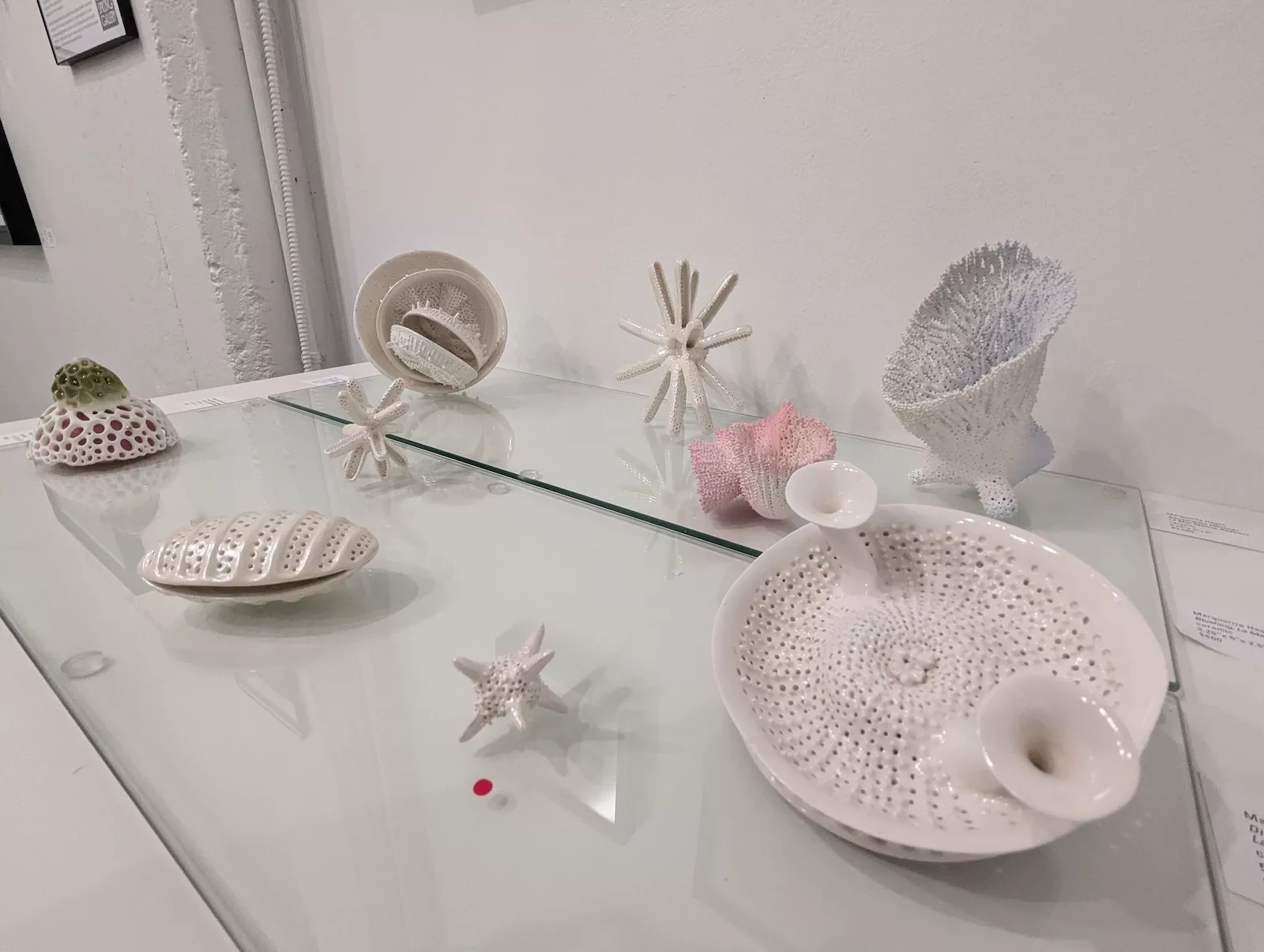
What looks to be a display of otherworldly fungi and organisms are actually all around us. The work and the show is meant to both literally and figuratively magnify and share the visual voice of these important parts of our existence. “It’s not far out of reach,” said Heit, “it’s just out of eyesight.” Hagan’s www.margueritahagan.com lacy and delicate ceramics put diatoms, sea creatures, and fungi directly into our hands. She has been working from nature for most of her artistic career, and has spent a full 10 years in exploration and awe of the power and importance of our oceans through her La Mer series.
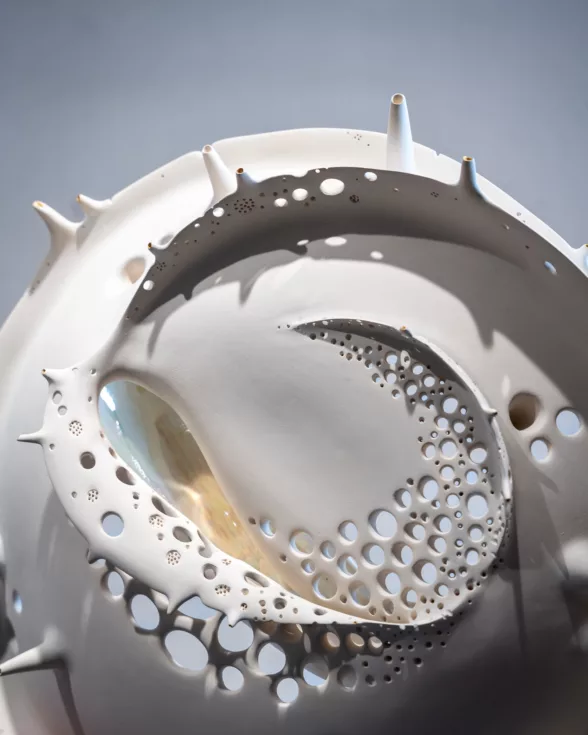
For this show, she created 2 new works – one, titled “Conservare, Marine Diatom Arachnoidiscus Shield,”, is part of her La Mer series (think small). “Conservare” is a representation of the diatom species Arachnoidiscus. The shield form is pierced in a radial, symmetrical pattern that reminds me of a Gothic rose window. It’s crazy to think about the fact that this represents a real, naturally occurring part of our existence on this planet. A second new piece is called “Rising”. It’s an impression of something very, very large – like the moon, or a goddess, or a sense of spirituality. Crafted on the same scale as “Conservare”, “Rising” is like a milky moon landscape, or peering into the ear of the universe. Shall I whisper a secret into it? What response might I get?
The universe does not scream. It is very, very steady and carries the same constant messages whether we are listening or not. It asks us for respect and cooperation – and occasionally reminds us that we humans, the instigators of the Anthropocene, are failing – miserably. Gregory Brellochs’s drawings speak in the same way. He works to create visual allegories – to bring the unseen to be seen and respected by us humans. The fungi and lichen drawings in the show are all part of his art-practicum meditation on the connections between the natural world as we find it, and its relation to consciousness and even astrophysics. I myself have delved into this rabbit hole, and the current interest in such things by the scientific community often throws back to the attitudes and practices of our ancient ancestors- those who still kept these unseen parts of our natural world in their sights.
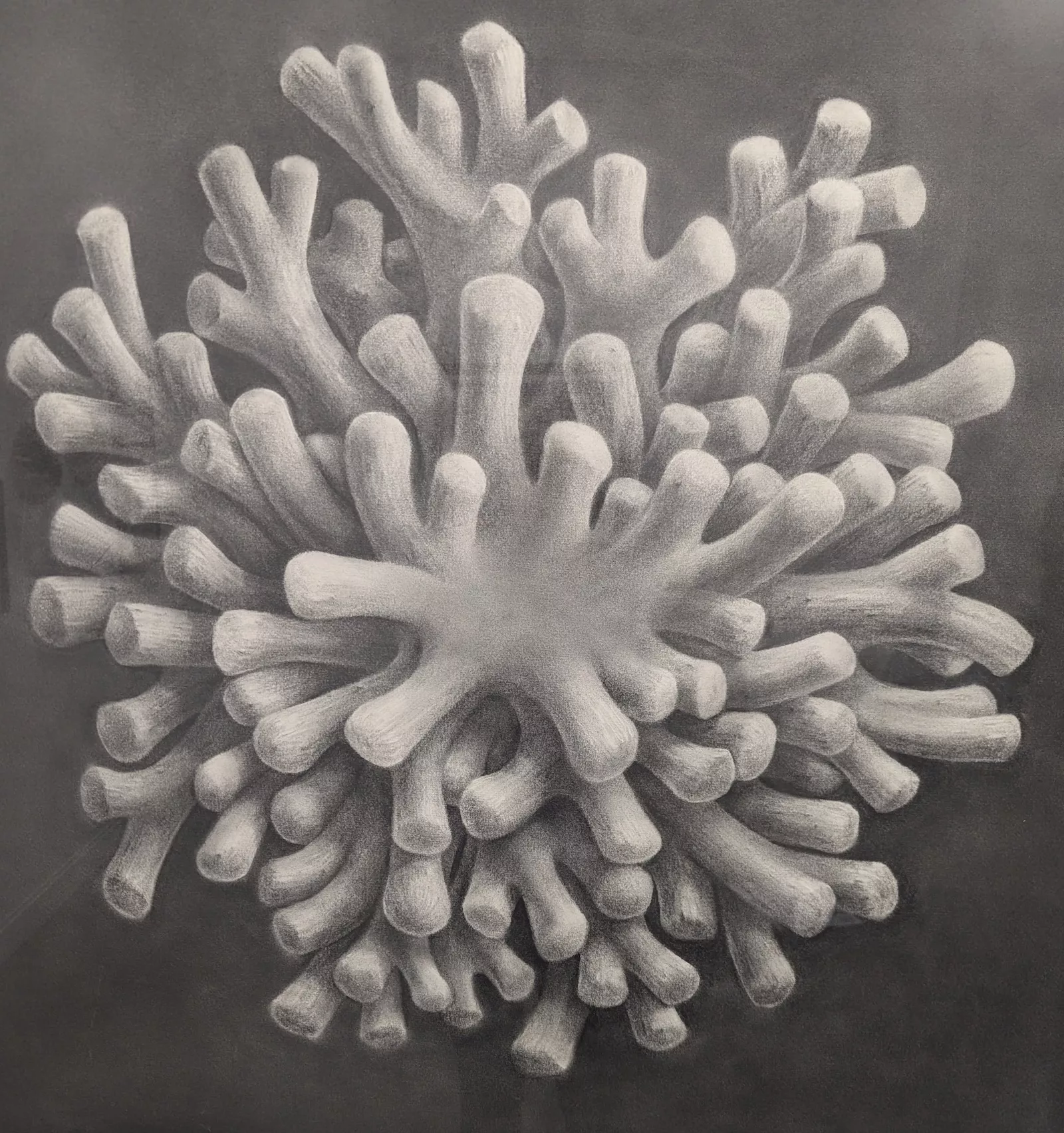
The intimacy of “Close Encounters” is all about what Brellochs’ calls an “awe, reverence, and adoration of nature.” Heit said, “Everything references something else– all the way up to us.” Indeed, as the ocean churned the tides of our ancient Earth, it was these first single-celled organisms that learned to work together to become new life forms – to develop the mycelia that drew plants from ocean to land – and the rest is history, as they say.
See Close Encounters at 1400 N American Street during gallery open hours: Thursday- Saturday, 1-6pm or by appointment. Enjoy the 2nd Thursday reception on February 13th, and be sure to catch the show before it closes on February 22nd. On February 6th, tune in online for a virtual artist talk with Brellochs, Hagan, and Heit from 6 to 7:30pm. Check boxspringgallery.com soon for the virtual talk link.


